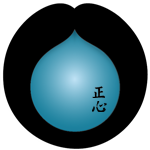From Ralston’s upcoming book Ending Unnecessary Suffering:
1:10 As an exercise, bring to mind all of the concepts you’ve been involved with throughout your life. Keep digging into it for a while. Notice it is a huge amount of concepts! Now, take a look into your current experience and notice every concept you can find that is influencing your experience right now. Keep your attention on the difference between concept and experience. Then, when you put this book down at some point, spend some time noticing all the concepts you have throughout a period of time. Remember, you have to do the work, otherwise ending suffering won’t occur.
There is nothing either good or bad, but thinking makes it so.
William Shakespeare
1:64 The beliefs upon which self and culture stand are not easily recognized, nor are they easily discarded once we identify them. Remember that both culture and self are created in much the same way—they’re the products of many foundation assumptions. These assumptions—accepting particular ideas to such a degree that they become taken for granted realities—give structure to our lives. They are the backdrop for our sense of self and reality, and they offer what seems like solid ground in a world of uncertainty. We may benefit from such a structure, but we need to recognize that our assumptions are also responsible for most of the limitations and suffering that we experience. What generally goes unnoticed is that they are not facts but merely beliefs and conceptual inventions, and since they are conceptual in nature, they are not necessary in and of themselves.
1:67 Image Exercise:
To better see this influence, right now take a moment to turn your head from side to side, looking left and then right. What perception gives you the impression that you’re moving your head? You can feel your head turning, and your visual field changes, seeing what’s to your left and your right.
Now close your eyes and do it again, turn your head from side to side, and notice that you can only feel your head moving. But do you also have an image of your head moving, as though you can “see” your head moving or what it looks like as it moves? Try this with your eyes closed and see what happens then come back to the book.
The image of your head moving when you have your eyes closed is a concept, not a perception. Since you can’t actually see your head moving, you are translating the feeling-sensations into an image and conceptually adding this to your “perception.” Fascinating, isn’t it?
1:68 We mix such images and other conceptual contributions with our perceptive-experience all the time, but we don’t notice that they aren’t perceptions. Instead, they are conceptual in nature. Just as with our beliefs, all conceptual activities—thoughts, ideas, speculations, imagination, and much more—influence our sense of reality without our knowing it. Consider how the sensation of turning your head is augmented with a conceptual “image” of that activity. That same interconnectedness between concept and perception is how our beliefs become fused with our perceptions.
Contemplate During the Week:
Focus on the past and notice that it is a concept you are having now and that it is fused with what is presently occurring. The past is actually a concept and doesn’t exist now. Notice how much the past influences your present experience.
Focus on the future and notice it is also a concept you are having now. Notice how much this concept you have of the future influences your present experience now.
Now where is this concept? Locate it in space. Is it in your head? Focus on this for a time. Notice that concepts aren’t objects, you can’t find them anywhere.
When you interact with others, consider how much your concepts influence your experience of them. Do you actually see them or do you see your concepts about them? Try to notice the difference between your concepts of others vs them. A useful question you can ask is how do they affect themselves rather than how they affect you?
View this reading on YouTube:
